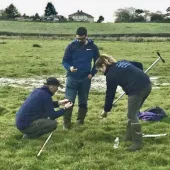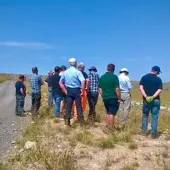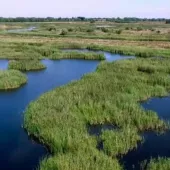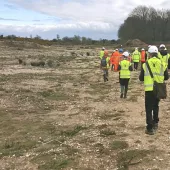The Added Benefits of Mineral Site Restoration
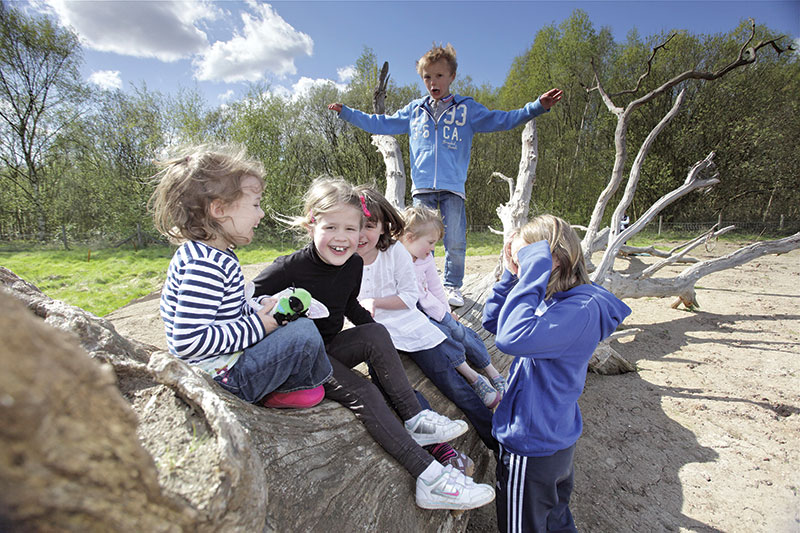
First published in the May 2015 issue of Quarry Management as Ecosystem Services
Biodiversity-led mineral site restoration can provide added benefits for people and the natural environment: Nature After Minerals’ Carolyn Jewell reports on the extra ‘services’ that a site’s ecosystems can provide, when restored for nature
Over the past couple of years, Nature After Minerals (the RSPB/Natural England partnership programme) has been working with partners across north-west Europe on the Interreg IVB North-West Europe-funded project RESTORE. One of the work areas being covered by the RESTORE project is ecosystem services and the economic value of minerals restoration. ‘Ecosystem services’ – a term that has attracted increasing attention over the past few years – formed a key theme within the Government’s Natural Environment White Paper, published in 2012.
The increasing need to halt the decline in biodiversity has been recognized by the minerals industry, with about 30% of quarries now being primarily restored for biodiversity1: a significant increase since 2006, when, although nature conservation featured in many end uses, the scale varied from a single pond to large mosaics of priority habitat2. It is now widely appreciated that biodiversity-led mineral restoration schemes can provide areas of high-quality habitat, boosting local biodiversity. Less understood, however, are the added benefits and associated socio-economic advantages also delivered by these sites.
Other than fulfilling the requirements of a planning permission and corporate social responsibility obligations, a restored quarry can provide much more than the named after-use. For example, a biodiversity-led restoration can provide some or all of the following: food, water, bioenergy, timber, flood regulation, water quality, soil-erosion control, pollination, climate regulation, recreation, tourism, education, employment, a sense of place – and this is not an exhaustive list.
A good understanding exists of the types of services can be delivered by restored mineral sites, but why is it important to measure these additional benefits? First, so that, in an economically driven environment, biodiversity-led restoration can be actively promoted in a language that is understood and stacks up against other after-use demands, thereby raising awareness of the need for a healthy, functioning natural environment; secondly, so that the provision of added benefits by different potential end uses can be taken into account during the decision-making process and during the formulation of long-term management plans; and lastly, to identify and address social impacts. Unlike identifiable economic values of some market-based after-uses, such as agriculture, other benefits, eg biodiversity gains or public access to green space, need specific scientific approaches to be valued, whether monetarily or in some other way.
The aim of the RESTORE project work on ecosystem services is to quantify the ecosystem service delivery at former mineral sites that have been restored for nature conservation and, thereby, provide new insights into the role of such sites in contributing to human well-being. The need to put monetary values against ecosystem services has led to a number of different economic valuation techniques being created around the world. To obtain an understanding about the pros and cons of each technique, and how applicable they are to evaluating restored mineral sites, the RESTORE project has undertaken a rigorous review of such methods, which can be found on the RESTORE website (www.restorequarries.eu).
Within the RESTORE work programme, the ecosystem services delivered by a number of sites across north-west Europe are being assessed using an approach set out in the existing ‘Toolkit for Ecosystem Service Site-based Assessment’ (TESSA)3. TESSA assesses the net benefits provided by a site by comparing what is currently provided with what could have been provided under a different, alternative state – for example, the historic land use of the site prior to extraction or a different restoration end use that could conceivably have been created at the site. There is a wide range of services which could potentially be provided by restored sites, some of which are listed above, but not all of them are easily measureable. TESSA focuses on the following classes of ecosystem services, which are considered practical to measure given limited resources and time: global climate regulation, water, harvested wild goods, cultivated goods and nature-based recreation. This method is particularly useful in a minerals scenario, as the consideration of an alternative state means that the relative provision of ecosystem services at each site can be measured against other plausible restoration strategies. The results have the potential, therefore, to be used as guidance by the industry when planning restoration options at other sites in the future.
Through the RESTORE project, the TESSA methodology is being applied to nine mineral extraction sites across north-west Europe, including the former Hanson site and now RSPB reserve: Middleton Lakes, the results of which are highlighted here.
Case study: Middleton Lakes Nature Reserve
Middleton Lakes Nature Reserve is a 160ha former sand and gravel extraction site near Tamworth, Staffordshire. The site has been restored to a mixture of habitats, including open water, wet grassland, reed bed and woodland, and is estimated to attract around 30,000 visitors a year. In this particular case, determining an alternative state for the site was simple, as it was originally due to be restored to more of a ‘country park’ type environment. Of the classes of ecosystem services that fall within TESSA, global climate change mitigation (defined as carbon storage and carbon sequestration) and nature-based recreation were considered the most appropriate and relevant at Middleton Lakes.
To estimate values for the carbon storage and sequestration afforded by each of the habitat types, three methods were used: on-site vegetation transects; collection of soil samples; and existing values taken from similar habitats elsewhere. This allowed an estimate of the amount of carbon present across all the habitat types to be calculated.
To calculate the nature-based recreation value of the site, Middleton Lakes was compared directly with Kingsbury Water Park, a former gravel extraction site that is now a country park situated in close proximity to Middleton. At each site visitors completed questionnaires and, using the results, an estimate of the total recreation value of each site was made based on the travel costs incurred and total visitation rates.
The mixture of habitats provided by the biodiversity-led restoration at Middleton Lakes means that the site affords greater carbon storage than would have been the case had it become a country park. However, it also means that net sequestration of greenhouse gases is less, largely due to the presence of reed beds, which emit methane. The recreational value of Middleton Lakes is most apparent when the landscape context is considered: although many more people visit neighbouring Kingsbury Water Park, there are people who visit Middleton Lakes who would not visit a country park, and so the overall recreational benefit to the community is greater because a nature reserve has been added to the landscape.
Conclusion
The sites being analysed using the TESSA approach have been chosen to represent a range of variables, from the type of mineral extracted to the end use and potential alternative states with which the site is compared. From the Middleton Lakes example, it has been shown that ecosystem services can be evaluated to support arguments for restoring mineral sites for nature conservation, but that this does need to be considered on a service- and site-specific basis.
The results from the complete set of sites, along with all the findings from the RESTORE project, will be presented at the project’s final conference on 17 June 2015 in Brussels, where some general principles will be put forward for the minerals industry to use when planning mineral site restoration. This research is cutting edge, exciting and evolving, and could make a real difference to the industry, so why not join the NAM team in Brussels to find out more.
References
- KING, H.: ‘Introducing an Ecosystem Approach to Quarry Restoration’, Cranfield University, 2013.
- DAVIES, A.: ‘Nature after minerals: how mineral site restoration can benefit people and wildlife’, 2006.
- PEH, K.S.-H., et al.: ‘A toolkit for rapid assessment of ecosystem services at sites of biodiversity conservation importance’, Ecosystem Services, 2013, 5, e51-57.
- Subscribe to Quarry Management, the monthly journal for the mineral products industry, to read articles before they appear on Agg-Net.com

